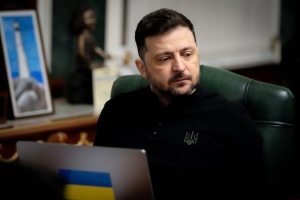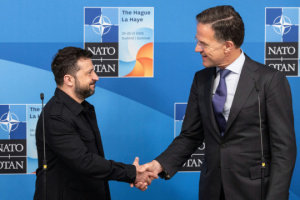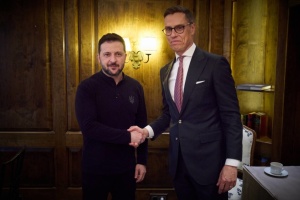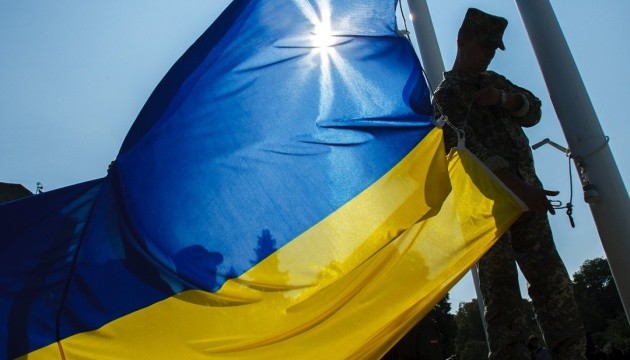
Twenty-five important facts about Ukrainian flag
The history of the Ukrainian flag reflects the whole history of the Ukrainian statehood - from ancient times to the present day. The ritual symbolism of its colours is associated with the Great Migration of Peoples which took place 3000 BC. These colours have always been on the flags of our state for centuries since the baptism of the Kyivan Rus. The Ukrainian flag as it is today was raised in Lviv in June 1848. In the USSR, this combination of colours was prosecuted as a dangerous crime. The blue and yellow flag accompanied the proclamation of the Ukrainian statehood in 1917, 1941 and 1990, the three revolutions in modern history – the Revolution on Granite, the Orange Revolution and the Revolution of Dignity - and the ongoing war against the Russian-imperial invasion of Donbas and Crimea.
Ukrainian flag in ancient times...
For the first time ever, a combination of blue and yellow colours appeared on the coat of arms of Lviv city. Daniel of Galicia presented a coat of arms depicting a yellow lion against a blue background to the city, founded in 1256.
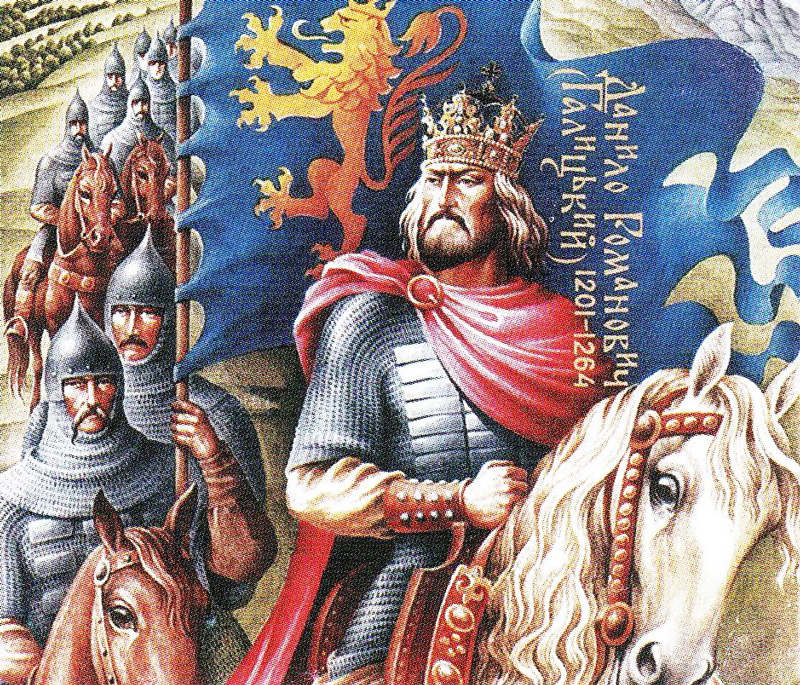
Gold and blue colours were used in the coat of arms of the Kingdom of Ruthenia officially from the 14th century. These colours were also present on the coat of arms of local grandees and princes.
The flags of Cossacks of the Zaporozhian Sich also often had a combination of blue and yellow colours, especially from the 18th century. Usually, the flags depicted Cossack wearing gold or red clothes.
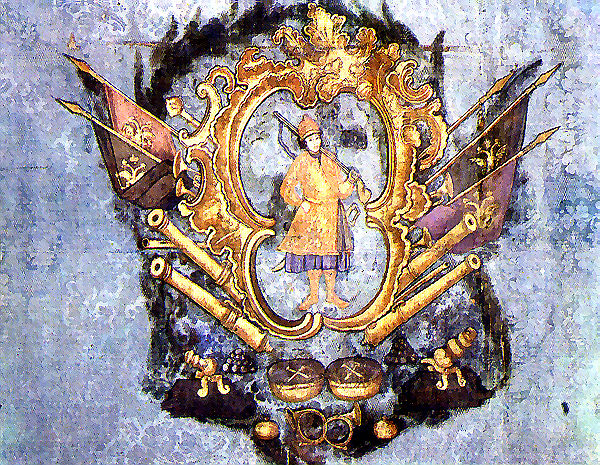
During the revolutionary Spring of Nations in 1848, the Supreme Ruthenian Council in Lviv restored the use of the coat of arms of the Kingdom of Ruthenia (Kingdom of Galicia–Volhynia) of the 13th-14th centuries with the depiction of a golden lion against blue background and the flags with a combination of blue and yellow were widely used as national flags.
In his painting the Reply of the Zaporozhian Cossacks to Sultan (1891), artist Ilya Repin hid blue and yellow and red and black flags on the spears over the heads of Cossacks. The artist's consultant was a famous historian, an expert in Ukrainian Cossacks, Dmytro Yavornytsky. Repin painted most of the ammunition, weapons, other Cossack paraphernalia, including flags, from the exhibits of Yavornytsky's collection.
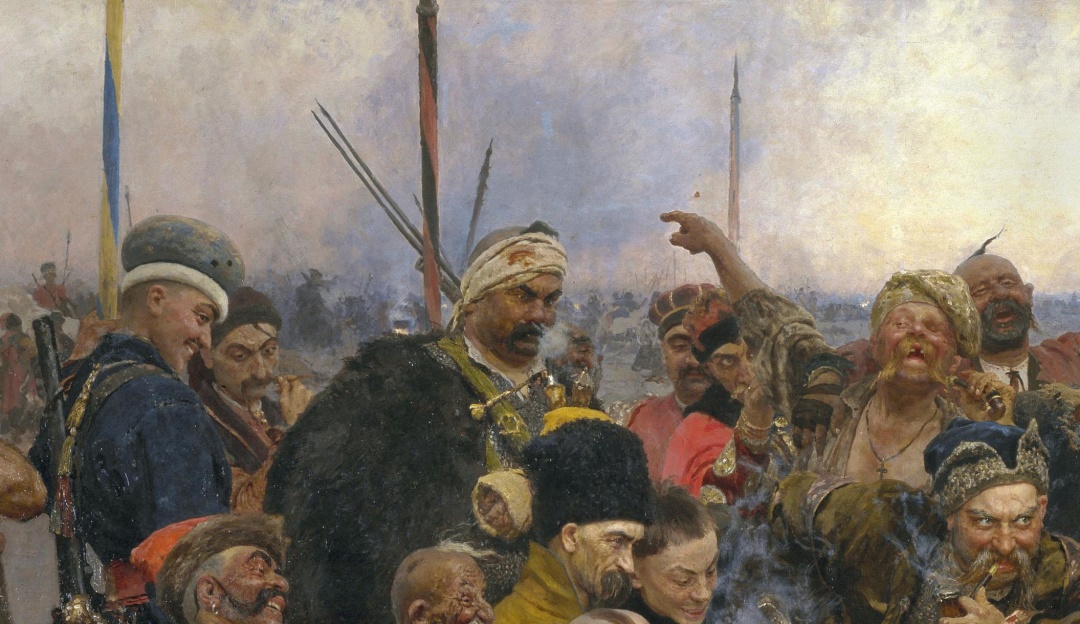
On May 5, 1900, the activity of the Ukrainian Sports and Fire Fighting Association "Sich" started in Galicia under a blue and yellow flag. Gradually, the idea of a blue and yellow Ukrainian flag spread to Zakarpattia lands and across the ocean to the settlements in America with the onset of mass migration of Ukrainians in the late 19th century.
...in the struggle for independent Ukraine...
For the first time since the February Revolution of 1917, Ukrainian blue and yellow flags appeared publicly in Kyiv, Odesa and Kharkiv on March 16. The Ukrainianization of units of the czar’s army on the fronts of the World War I and in the Black Sea Fleet took place under the Ukrainian flags.
On March 17, 1917, the establishment of the Central Council of Ukraine was announced. From that time onwards, the Ukrainian blue and yellow flags began to appear publicly at the state level. The first President of Ukraine, Mykhailo Hrushevsky, approved such a combination of colours as the country's official flag.
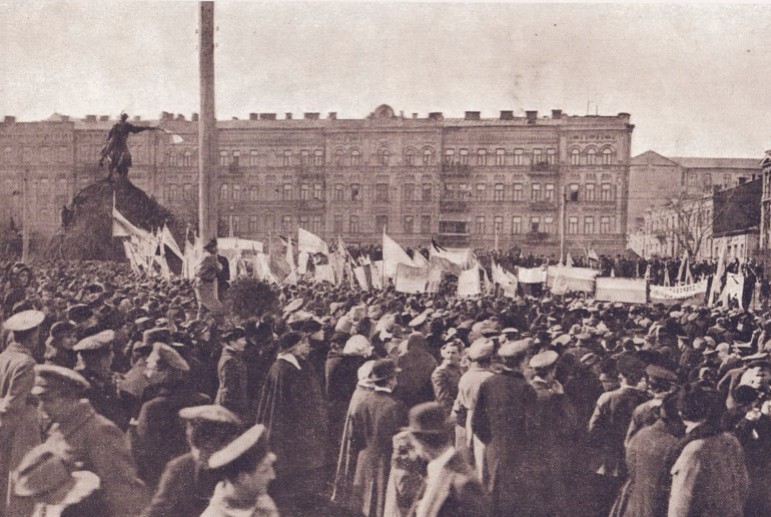
Ukrainian students marched into the Battle near Kruty against the Russian Bolsheviks and the soldiers of the Ukrainian Galician Army fought during the Ukrainian-Polish war and on the anti-Bolshevik front under a blue and yellow flag since it was the flag of both the Ukrainian People’s Republic and the West Ukrainian People's Republic.
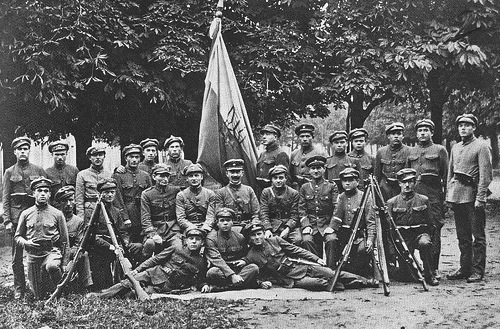
Soldiers of the Ukrainian Galician Army
There have been arguments – often quite heated – about the arrangement of colours: whether the flag should be blue on the top as in modern version or it should be yellow on the top as in times of the Ukrainian People’s Republic. Modern scientists assume that there are no documents that would prove the arrangement of the yellow band on the top and the blue one on the bottom in the Ukrainian People's Republic. Both variants can be seen on coloured photos of that time, and the old white and black photos cannot hint about the arrangement of the flag’s bands.
In the early 1940s, the revolutionary wing of the Organization of Ukrainian Nationalists under the leadership of Stepan Bandera – the OUN (b) – sought to create its own red and black flag to differentiate from the OUN (m) under the leadership of Andriy Melnyk that used the OUN's blue flag and coat of arms depicting gold trident with sword. The red and black flag became popular among young people, particularly in the Plast scouting organization back in the 1920s when the Polish authorities in Galicia persecuted the use of the national blue and yellow flag by Ukrainians (for example, football players of the sports society “Ukraine” played in red and black wear. However, the Soviet-German war began, and the black and red symbols remained informal.
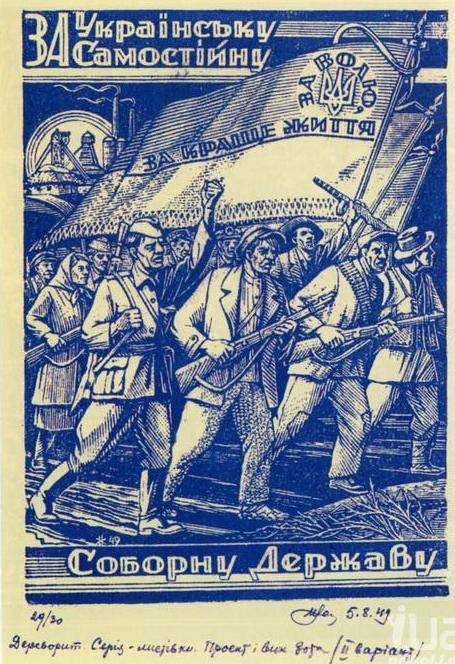
Engraving (woodcutter) by Nil Hasevych
In 1940s-1950s, many soldiers of the Ukrainian Insurgent Army - the OUN’s paramilitary formation - did not even know about it so they fought with blue and yellow flags that were found in their shelters.
From March 15 to late May 1939, the Carpathian Ukraine state emerged and fought for independence under a blue and yellow flag.
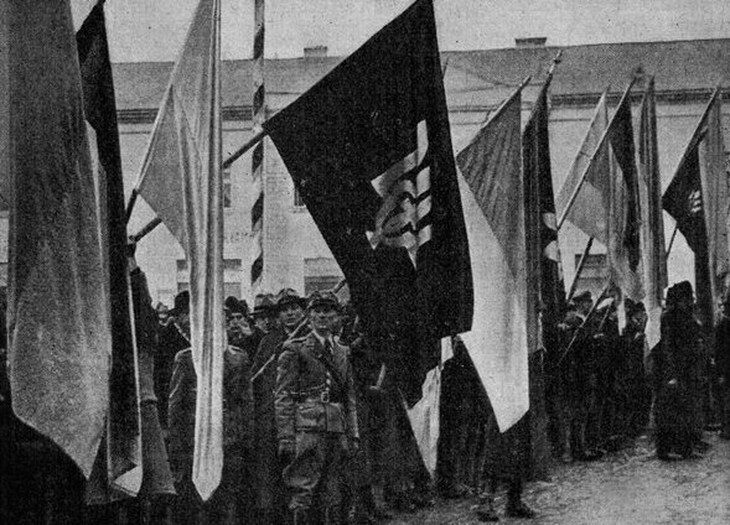
...in the times of USSR...
The usage and even possession of a blue and yellow flag were considered a crime and was punished severely in the Soviet Union. The KGB reports for 1950s-1980s regularly mentioned hoisting the flag in the populated localities across Ukraine.
On the night of May 1, 1966, 26-year-old Viktor Kuksa and 28-year-old Heorhiy Moskalenko raised a blue and yellow flag over the building of the Kyiv Institute of National Economy (now the Kyiv National Economic University). They ripped off the Soviet red flag and hoisted the national Ukrainian flag instead. The flag sewn from two scarves had a handwritten inscription on it "Ukraine has not yet died - it has not been killed yet". The two men were sentenced to imprisonment. Many years later, they could not achieve rehabilitation even in the already independent Ukraine for a long time.
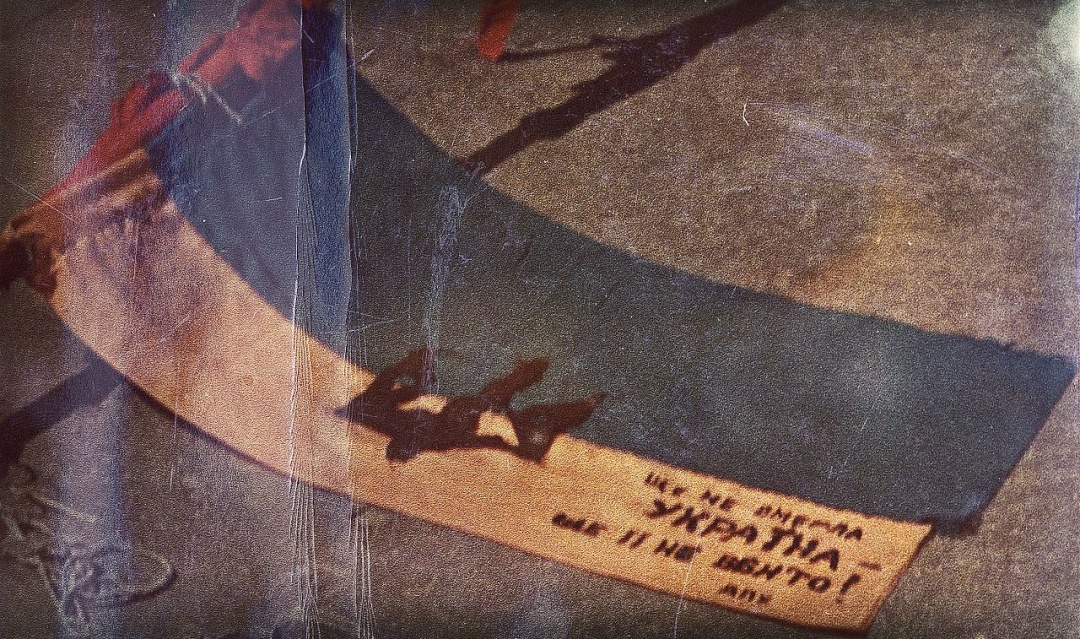
On December 30, 1967, unidentified persons hung a blue and yellow flag on the central avenue of Dnipropetrovsk. A trident was drawn in pencil on a flagpole and the inscription was written: “Ukraine has not yet died, neither freedom nor glory. UPR marks 50 years on November 20. Ukraine’s independence was declared on January 22, 1918.”
On February 21, 1976, a blue and yellow flag appeared even on the roof of the house at 21, Khreshchatyk Street in Kyiv city centre.
On July 22, 1976, a student from Toronto, Liubomyr Shukh, waved the Ukrainian flag during the USSR-Romania handball match at the XXI Olympic Games in Montreal, for which he was removed from the arena. A representative of the Organizing Committee for the Olympic Games explained that the student’s actions bore the marks of political protest and a “potentially dangerous” flag “could lead to unrests.”
And just five days later, during the football semi-final match between the national teams of the German Democratic Republic and the USSR (the latter was predominantly composed of the Dynamo Kyiv players), 150 Ukrainians hung the banner “Freedom to Ukraine!” In the second half, 20-year-old Danylo Myhal from Thunder Bay (Ontario) ran out onto the field wearing an embroidered shirt and carrying a blue and yellow flag. He shouted "Freedom to Ukraine!" and danced Ukrainian folk dance hopak. The action lasted 15 seconds, after which the police took him out of the stadium.
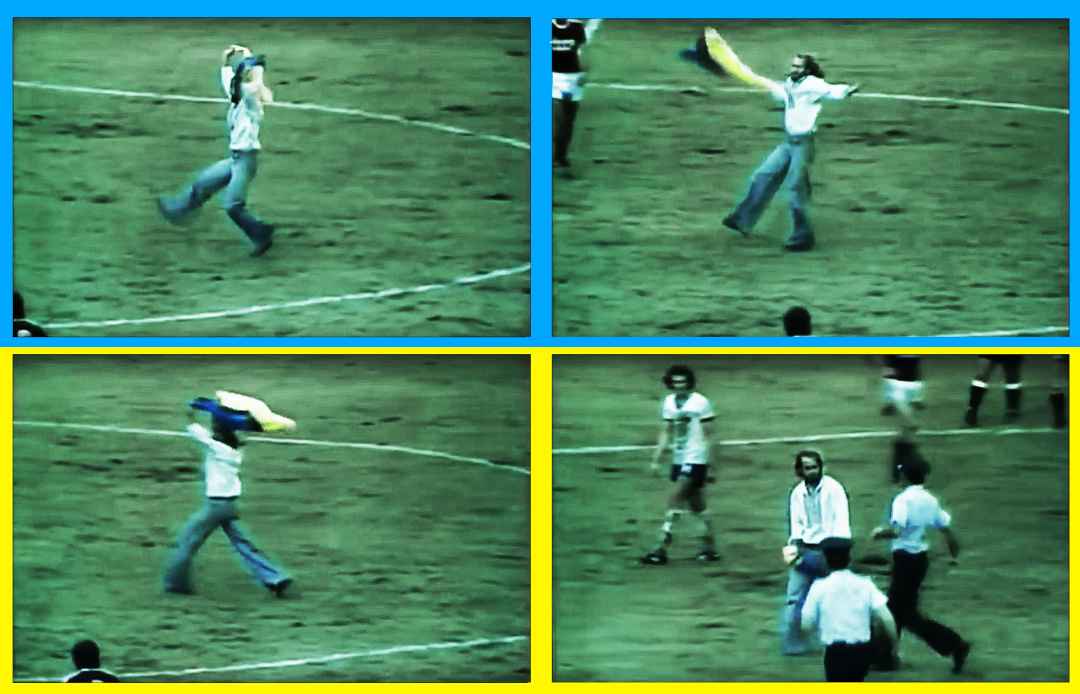
On April 26, 1989, an activist of the Lion Society Yuri Voloshchak for the first time openly raised the national flag at a rally in honour of the anniversary of the Chornobyl disaster on the Rynok Square in Lviv. Artist Halia Dmytryshyn made that flag with a golden trident sewn on it.
...and in modern Ukraine
It is no coincidence that on the National Flag Day we recall the historic moment of carrying of the national flag in the Verkhovna Rada hall on August 24, 1991. Until that day, the pro-communist majority in the parliament in every possible way prevented the appearance of a blue and yellow flag in the parliament’s building, demanding to remove even the small flags that the members of the People’s Council faction had at their workplaces. After the 1991 Soviet coup d'état attempt failed, no objections to having national symbols in the national legislative assembly were longer possible.
The blue and yellow flag was officially approved as the state symbol of Ukraine on January 28, 1992. In August 2004, the President signed a decree establishing the Day of the National Flag of Ukraine which is celebrated annually on August 23. In Kyiv, it is also celebrated at the municipal level on July 24. It was on this day in 1990 that a blue and yellow flag was raised above the Kyiv City Hall.
Winter 2013-2014: Maidan, the deaths of the Heroes of Heavenly Hundred immediately followed by the tragedies on the Ukrainian territory attacked by the enemy. Those events fundamentally changed the attitude to state symbols. Historical reflection and heraldic disputes pale in comparison to the living history that is happening before our eyes.

On April 17, 2014, member of the Horlivka Town Council (Donetsk region) Volodymyr Rybak was kidnapped by unknown persons. Earlier, Rybak tried to remove the separatist flag and return the Ukrainian flag to the town council building. Two days later, his body with traces of torture was found in the river by local fishermen. On February 20, 2015, he was awarded the title of the Hero of Ukraine (posthumously). Persons who have committed this crime are now hiding in the territory of the aggressor state.
However, the Ukrainian flag is well-known in that state also. On August 20, 2014, roofer Mustang painted blue the upper half of the gold star on a high-rise building in Moscow, making it look like “Ukrainian” (by the way, a Ukrainian flag was hoisted on the same building a year later to mark the Maidan anniversary).
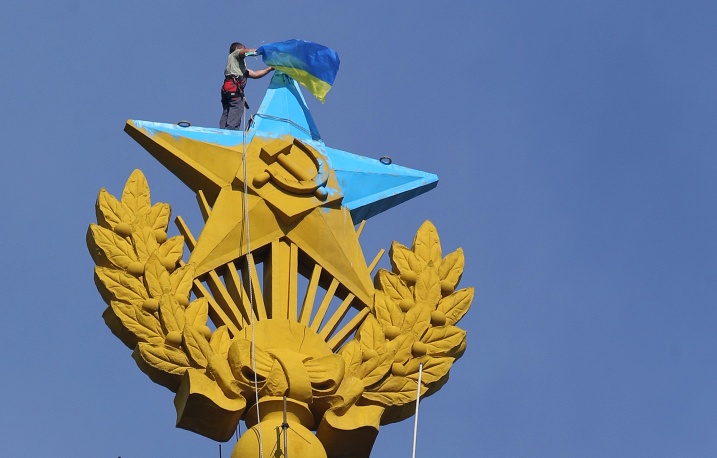
Russian activists take blue and yellow flags for rallies, in particular, in support of political prisoners and the persecuted Crimean Tatars. Russian activists from St. Petersburg and Moscow united in a perpetual rally called "Strategy18" in honour of the day of deportation of the Crimean Tatars on May 18, 1944. On the 18th day of every month, they hold rallies in the streets of their cities to tell about the situation in Crimea.
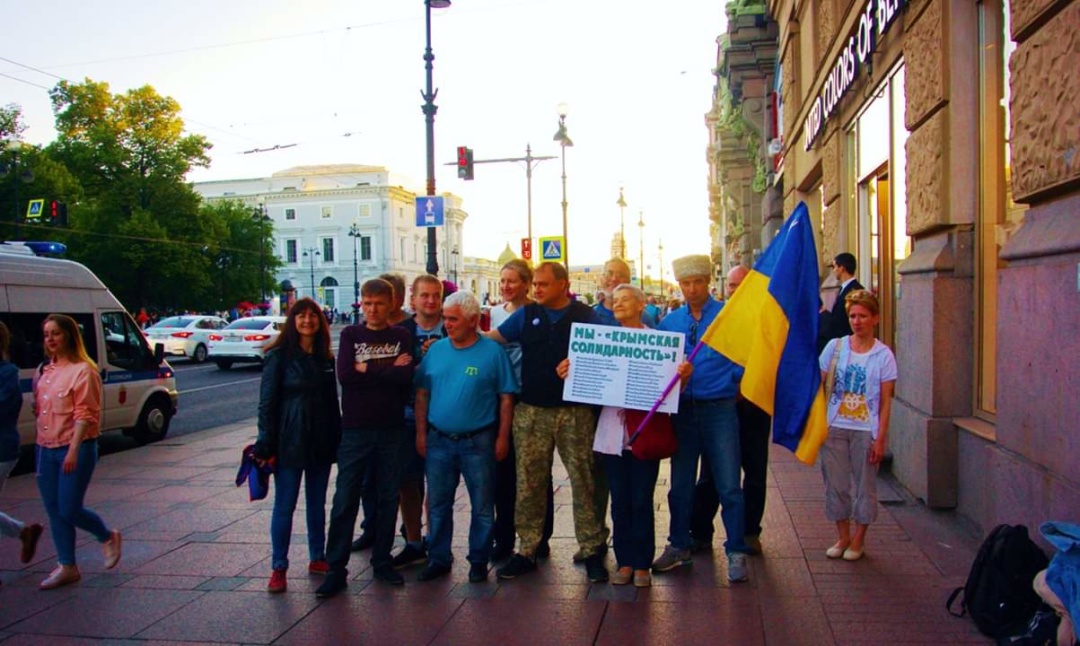
A blue and yellow flag was hoisted over the Donetsk airport throughout its defence. The enemy shot down flags with fire, but Ukrainian defenders - the “cyborgs” - inevitably restored the symbol of the Ukrainian state. On August 23, 2014, the flag was set by the fighters of the 3d separate special forces regiment. Now, twice a year - on the Day of the National Flag of Ukraine and on the day of the military unit - this legendary flag from the Donetsk airport is raised above the military unit in Kropyvnytskyi town. On October 16, 2014, the Ukrainian flag was hung on the airport building by cyborgs from Mykolayiv 79th separate airmobile brigade. A yellow-blue flag was wavering above the highest point of the airport - the control tower - until the enemy destroyed the tower itself.
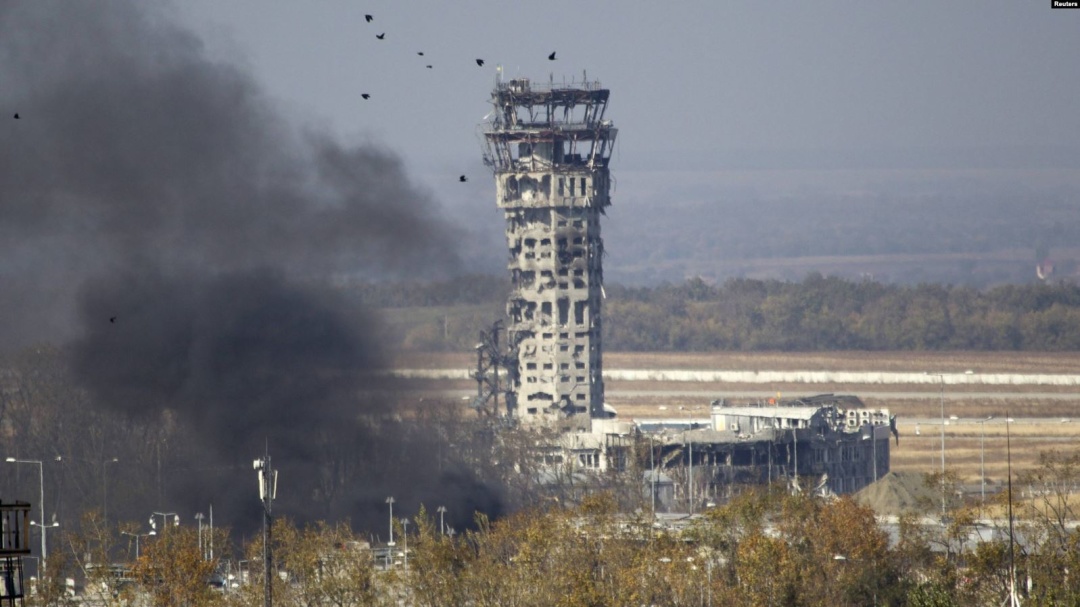
And now the latest news from the “flag front.” On August 9, 2019, the Ukrainian flag was hoisted by local patriots in Sudak town in the temporarily occupied territory of the Autonomous Republic of Crimea to honour the memory of the four marines from the 36th brigade of the Ukrainian Armed Forces who had been killed in Pavlopil, Donetsk region. Earlier, on December 17, 2018, the Ukrainian flag was raised above Foros Cape in honour of 24 Ukrainian sailors held captive in Moscow.
Thousands of flags of a free independent country, which is fighting and building its future and is striving to move away from a post-empire towards a community of democratic European states, are raised across Ukraine... By the way, the symbols of the European Union are also blue and yellow “by an amazing coincidence.”
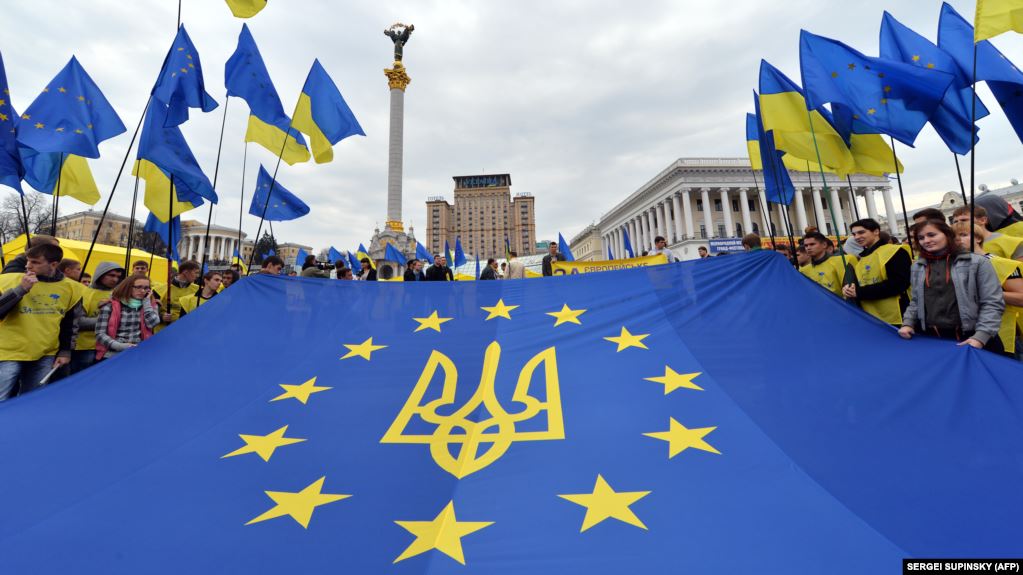
Prepared by Oleksandr Volynsky, Kyiv

